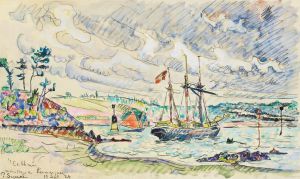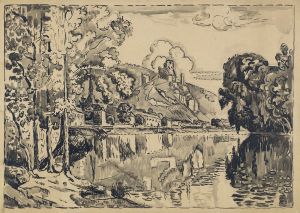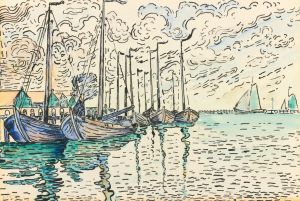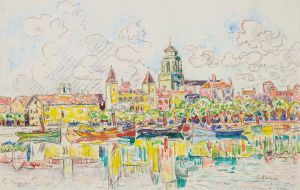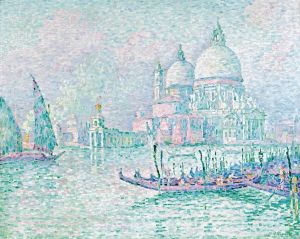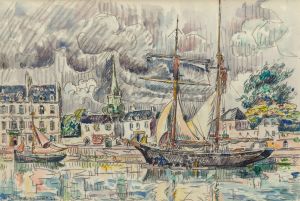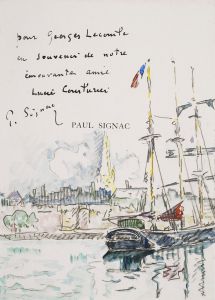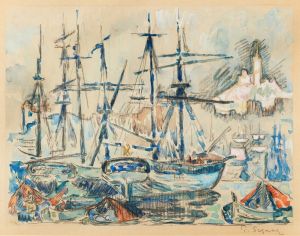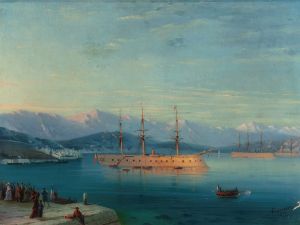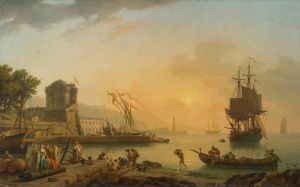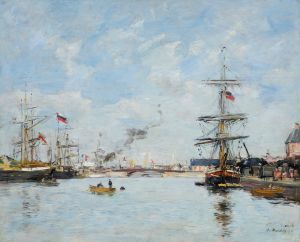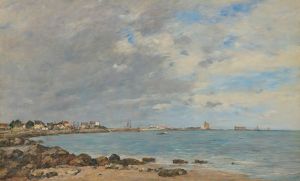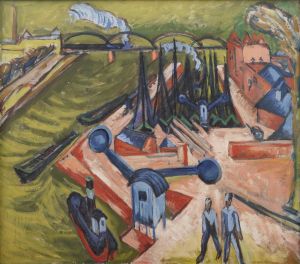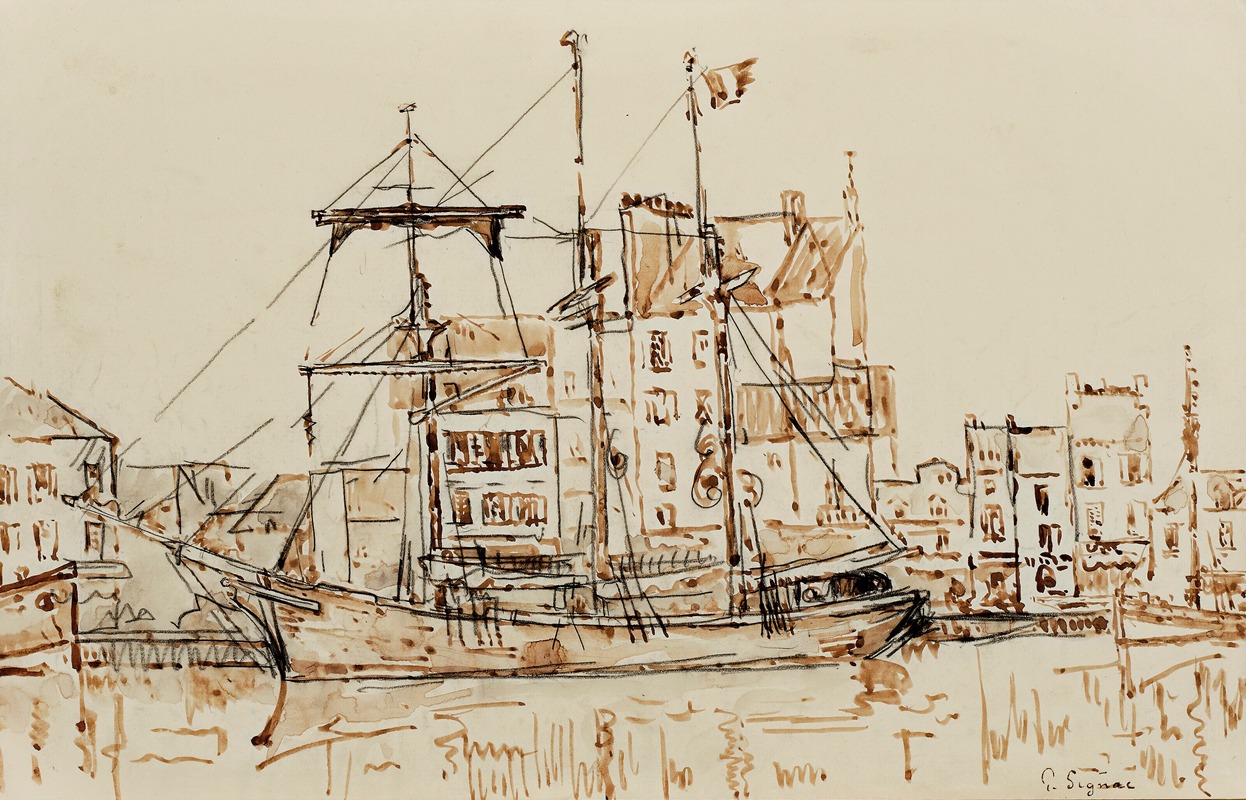
Trois-mâts au port
A hand-painted replica of Paul Signac’s masterpiece Trois-mâts au port, meticulously crafted by professional artists to capture the true essence of the original. Each piece is created with museum-quality canvas and rare mineral pigments, carefully painted by experienced artists with delicate brushstrokes and rich, layered colors to perfectly recreate the texture of the original artwork. Unlike machine-printed reproductions, this hand-painted version brings the painting to life, infused with the artist’s emotions and skill in every stroke. Whether for personal collection or home decoration, it instantly elevates the artistic atmosphere of any space.
"Trois-mâts au port" is a painting by the renowned French artist Paul Signac, a leading figure in the Neo-Impressionist movement. Signac, born in 1863, was a contemporary of Georges Seurat and is best known for his development and advocacy of the Pointillist technique, a method of painting in which small, distinct dots of color are applied in patterns to form an image.
The painting "Trois-mâts au port," which translates to "Three-Masted Ship in Port," exemplifies Signac's fascination with maritime themes and his mastery of capturing the play of light on water. Signac had a lifelong passion for sailing, and this interest is frequently reflected in his artwork, which often features seascapes, harbors, and boats.
Created in the late 19th or early 20th century, "Trois-mâts au port" showcases Signac's signature style, characterized by vibrant colors and meticulous attention to detail. The painting depicts a serene harbor scene, dominated by a majestic three-masted ship. The use of Pointillism in this work allows Signac to explore the effects of light and color, creating a shimmering, almost mosaic-like quality that captures the viewer's eye.
Signac's technique involves placing tiny dots of pure color side by side, rather than mixing pigments on a palette. This method relies on the viewer's eye to blend the colors optically, resulting in a luminous effect that enhances the vibrancy of the scene. In "Trois-mâts au port," this technique is particularly effective in rendering the reflections on the water and the interplay of sunlight and shadow on the ship's sails and the surrounding environment.
The painting is not only a testament to Signac's technical skill but also reflects his philosophical alignment with the ideals of Neo-Impressionism. This movement, which emerged in the late 19th century, sought to bring a scientific approach to the study of color and light, influenced by contemporary optical theories. Signac, along with Seurat, was instrumental in developing and promoting these ideas, which were seen as a departure from the more spontaneous and emotive style of the Impressionists.
"Trois-mâts au port" is part of Signac's broader body of work that often features maritime subjects, reflecting his personal love for the sea and his extensive travels along the French coast and the Mediterranean. His works are celebrated for their ability to convey the beauty and tranquility of these settings, as well as their innovative use of color and form.
Today, Paul Signac's paintings, including "Trois-mâts au port," are held in high regard and can be found in major art museums and private collections around the world. They continue to be studied and admired for their contribution to the development of modern art and their enduring aesthetic appeal. Signac's influence extends beyond his own paintings, as he played a crucial role in inspiring future generations of artists to explore the possibilities of color and technique in new and exciting ways.





